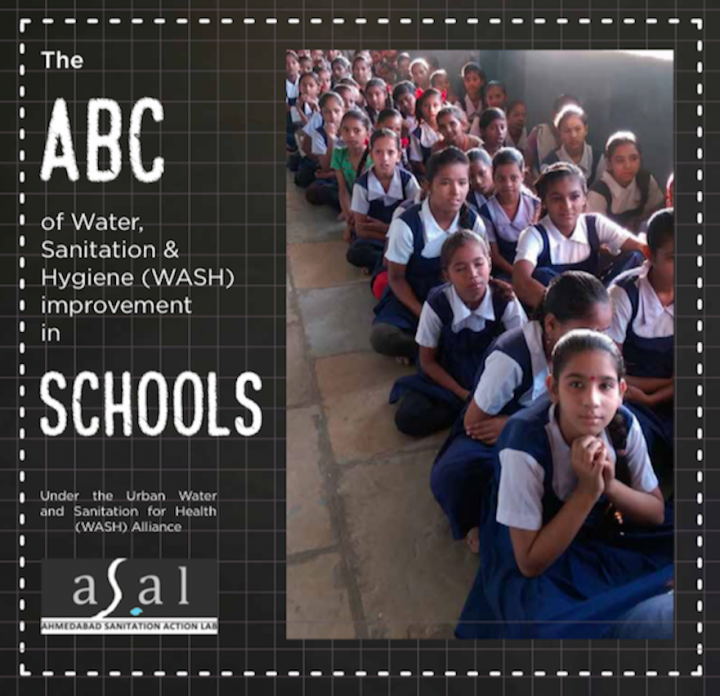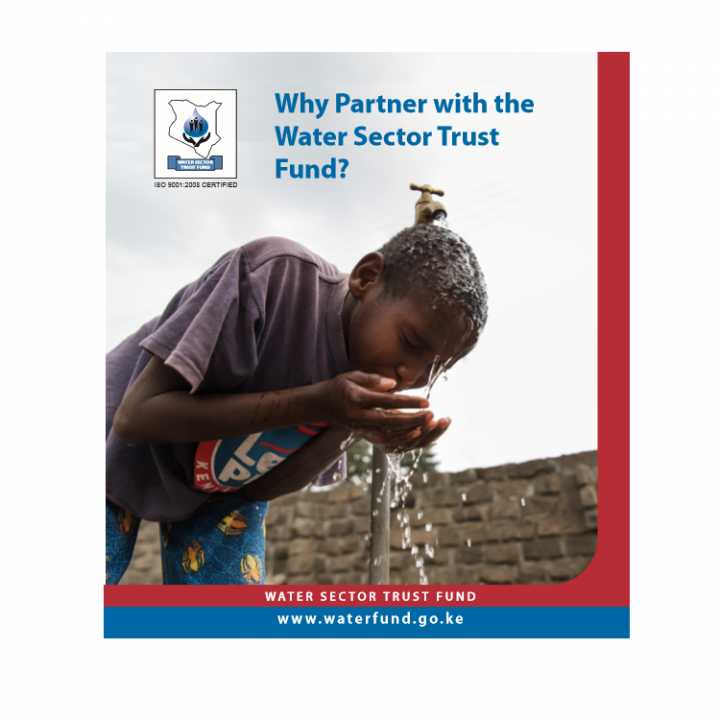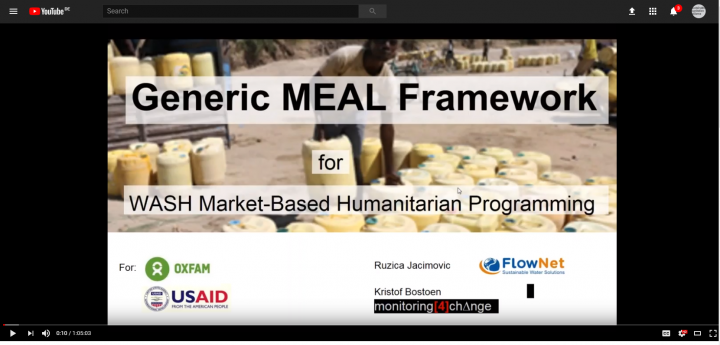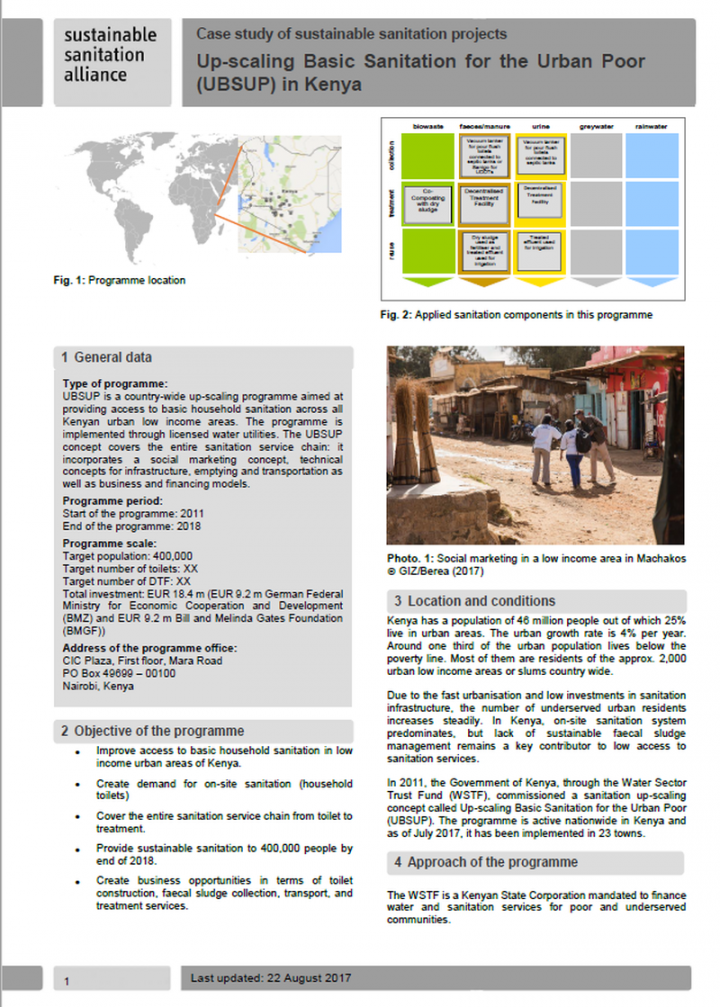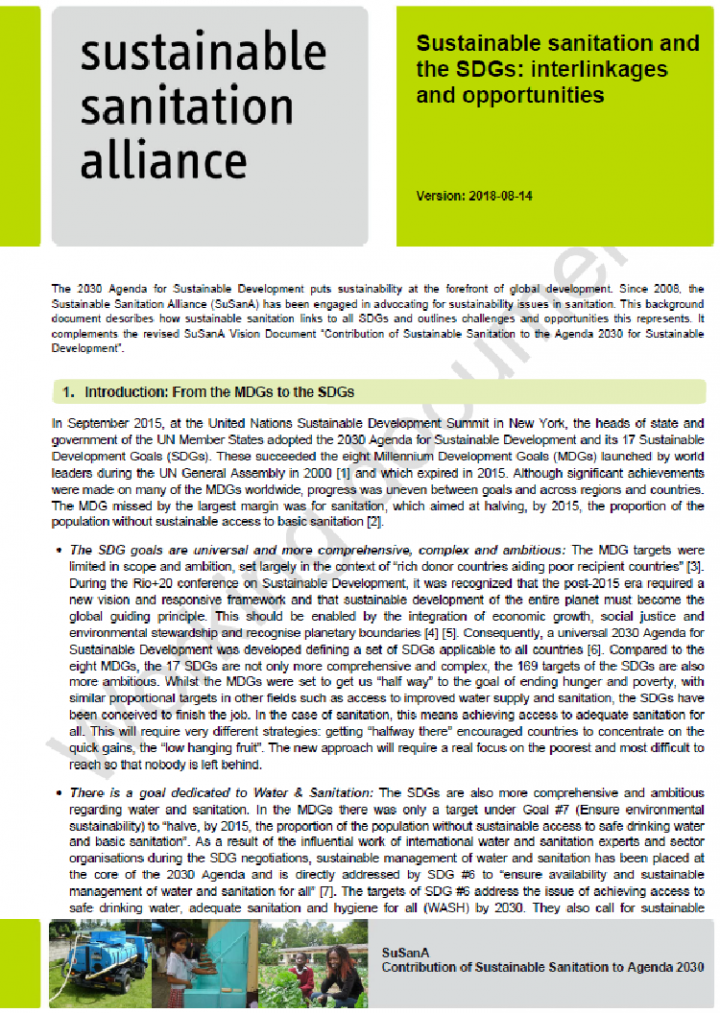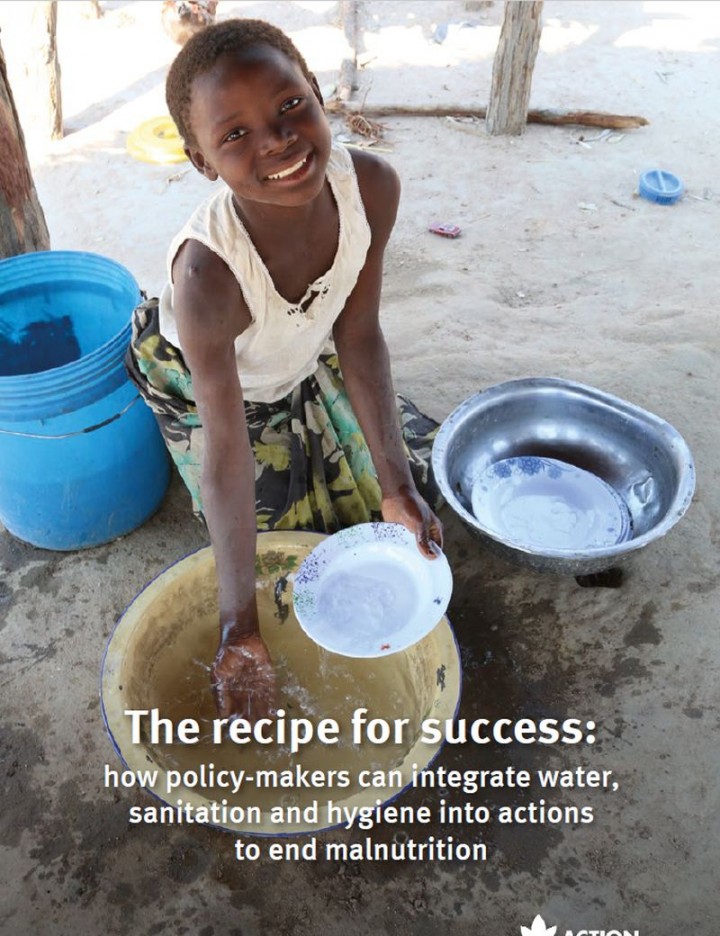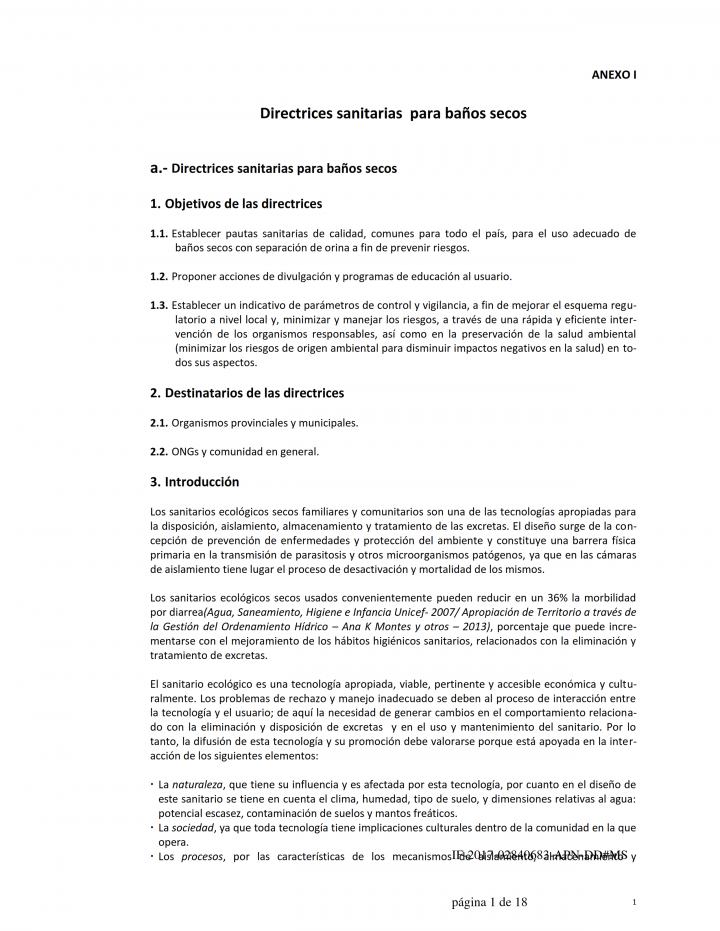Urban Management Centre (UMC) (2017) The ABC of WASH in Schools in India
"The ABC of water, sanitation and hygiene (WASH) improvement in schools” in India by the the Urban Management Centre is a handbook developed under the Ahmedabad Sanitation Action Lab (ASAL), a three year action research program. The program was specially designed to implement innovative solutions to school WASH problems in identified slum settlements of Ahmedabad. ASAL was led by the Urban Management Centre (UMC) in […]
TERI University (2017) State of Urban Water and Sanitation in India
The report aims to be a comprehensive collection and analysis of past and current policies and programmes and provides insights into the reasons for several gaps that become apparent when the sector is viewed holistically. The extensive review of international, national, and state-level reports draws upon a rich collection of secondary literature. A series of stakeholders’ consultation workshops were held at regional and national levels […]
State Level Sanitation Committee (SLSC), Deutsche Gesellschaft für Internationale Zusammenarbeit (GIZ) (2016) State Sanitation Strategies of Telangana, Kerala and Andhra Pradesh SNUSP II
Sanitation as per National Urban Sanitation Policy (2008) is defined as safe management of human excreta, including its safe confinement treatment, disposal and associated hygiene-related practices. The Twelfth Five Year Plan (2012-17) of the states of Andhra Pradesh, Telangana and Kerala target to reduce the gap between the demand and supply of urban infrastructure services by increasing investments in urban infrastructure. The National Urban Sanitation Policy […]
Dauenhauer, K., Büürma, M., Schlenk, J., Sommer, M., Mahon, T. (2017) Menstrual Hygiene Management (MHM) in Schools: A neglected issue - A Thematic Discussion Series hosted by GIZ and SuSanA
Menstrual Hygiene Management (MHM) refers to the way in which women and girls deal with their menstruation. Girls usually menstruate for the first time between the age of 10 and 15. Learning about menstruation is thus vital for secondary school students, but it is not too early to raise awareness in elementary school. Given the number of people affected by MHM in some way or […]
Eawag-Sandec, GIZ, Gret, pS-Eau, SuSanA, WaterAid, World Bank (2017) Safely managed sanitation in small towns
During the 2017 Stockholm World Water Week, SuSanA co-convened the event “Safely managed sanitation in small towns”. As a UN Habitat report highlighted, “between 20 to 50% of the population in most low and middle income countries live in small urban centres or large villages with small urban centres characteristics”. Small towns are often too small to have conventional sanitation infrastructures such as sewerage, but are […]
GTO (2017) WASH ePaper - Issue No. 7 Market Based Programming in Humanitarian WASH
The WASH ePaper is an online magazine published at regular intervals in several languages. Each issue takes a closer look at a current key issue in the water, sanitation and hygiene (WASH) sector and related areas. It also provides updates on forthcoming national and international events, news, current publications and projects from the sector. The WASH ePaper is published by the German Toilet Organization (GTO) […]
Federal Ministry for Economic Cooperation and Development (BMZ) (2017) BMZ Water Strategy A key contribution to implementing the 2030 Agenda and the Paris Agreement
Water and sanitation are key to implementing Agenda 2030 and the Paris climate agreement. The new water strategy of the Fed-eral Ministry for Economic Cooperation and Development (BMZ) accounts for the importance of water in these global agreements. In the strategy, BMZ commits to contributing to creating a new dynamic in the sector necessary to reach SDG 6 and other water-related targets. Therefore, the ministry […]
Water Sector Trust Fund (2017) Water Sector Trust Fund Brochure Why Partner with the Water Sector Trust Fund
Introduction of the Water Sector Trust Fund: description of their activities and achievements in terms of number of projects and beneficiaries.
Parkinson, P., Bostoen, K., Jacimovic, R. (2017) Webinar on Monitoring and evaluation of market based humanitarian WASH interventions (11 October 2017)
Monitoring, evaluation, accountability and learning was identified as a gap by the Global WaSH Cluster’s technical working group in WASH markets. More evidence is needed to prove or disprove assumptions and perceptions around effectiveness and efficiency of programme delivery and contribution of the responses towards market recovery. In order to enable comparative analysis between different modalities of MBP against traditional responses, with funding from OFDA, Oxfam […]
Blackett, I. (2017) SFD: The Indonesian Case
An excreta flow diagram (also often described as a shit flow diagram or SFD) is a tool to readily understand and visually communicate how excreta flows through a city or town. Based on the contributing population it shows how excreta is or is not contained as it moves from defecation to treatment then disposal or end-use, and whether the flows are safe or unsafely contained. This […]
Ohler, S. (2017) SuSanA 10th Anniversary Report
On the 17th of January 2017, the Sustainable Sanitation Alliance (SuSanA) celebrated its 10th anniversary at the GIZ headquarters in Eschborn, Germany. The celebration took place under the theme "10 years SuSanA: How the changed sanitation paradigm contributes to the Sustainable Development Goals". During the event, SuSanA’s achievements, milestones, and impact in the sanitation sector were reflected upon. Moreover, SuSanA’s future was discussed as well as […]
SuSanA (2017) SuSanA Joint Roadmap 2015 to 2018 – Towards More Sustainable Sanitation Systems Version 1.3
The Sustainable Sanitation Alliance (SuSanA) joint roadmap 2015 to 2018 was drafted to organise the platform to respond more effectively to the challenges of the Millennium Development Goals (MDG) and the Post-2015 Development Agenda. The SuSanA strategy process was initiated following a plenary meeting at the Stockholm World Water Week 2012. On initiative of the secretariat, a core group and key stakeholder meeting was convened in […]
Rohilla, S., Luthra, B., Padhi, S.K., Yadav, A., Varadharajan, A., (2017) SFD Report - Bansberia, India
Bansberia is a town in the Hooghly district of West Bengal, India. Bansberia Municipality was the nerve center of “Saptagram”, a port city, famous for its inland and foreign trades with Europe since 17th Century. Bansberia has a population of 1,03,799. The population density of the city is 11,445 persons per sq.km, which is high in comparison to the population density of West Bengal, i.e. […]
Jha, P. K. (2017) Toilet linked biogas slurry applied to crops Report on physicochemical and microbiological analyses of slurry from toilet linked biogas plants
Toilet linked biogas plants have been implemented at some scale in different villages in some districts of Gujarat by WASTE, Netherlands and FINISH Society, India. In an earlier study, the performance of such toilet linked biogas plants was compared to non- toilet linked biogas plants. The economic benefits of application of toilet linked biogas plant slurry on agricultural lands for different crops and vegetables, however, […]
Jha, P. K. (2014) Bio-gas yields from Toilet Linked Biogas Plants in Nausari / Valsad District, Gujarat, India
Biogas from cow dung with or without toilet linkage is in practice for over 3 decades in India. It is supported by the Ministry of New & Renewable Energy, Government of India and State Governments. However, the toilet linked biogas plant programme could not get required momentum, even though it has several advantages. To overcome the problem, the additional economic importance / advantages of toilet linked biogas plants over non-toilet […]
Dubois, A. (2017) Up-scaling Basic Sanitation for the Urban Poor (UBSUP) in Kenya
This case study describes the Upscaling Basic Sanitation for the Urban Poor (UBSUP) programme, which is a country-wide up-scaling intervention aimed at providing access to basic household sanitation in urban low income areas of Kenya. UBSUP is anchored at the Water Sector Trust Fund with technical support from GIZ and funding from the Bill and Melinda Gates Foundation and the German Government through the German […]
SuSanA (2018) Sustainable sanitation and the SDGs: interlinkages and opportunities
The 2030 Agenda for Sustainable Development puts sustainability at the forefront of global development. Since 2008, the Sustainable Sanitation Alliance (SuSanA) has been engaged in advocating for sustainability issues in sanitation. This background document describes how sustainable sanitation links to all SDGs and outlines challenges and opportunities this represents. It complements the revised SuSanA Vision Document “Contribution of Sustainable Sanitation to the Agenda 2030 for […]
WASTE Netherlands, IFS (2017) Beyond development aid: Sanitation financing & revenue models in reuse (human) waste Conference Proceedings
The Institute for Fiscal Studies, in collaboration with WASTE, organized the conference “Beyond Development Aid: Sanitation Financing & Revenue Models in Reuse (human) Waste” in The Hague, Netherlands, the 15th of May 2017. This conference brought together from different parts of the world; academics, practicioners and policymakers with the aim to generate knowledge regarding sanitation financing and Revenue models on sludge reuse.
Durrans, S., Jones, D., Pando, N.U., Wilson-Jones, M. (2017) The recipe for success How policy-makers can integrate water, sanitation and hygiene into actions to end malnutrition
In this report the authors analyse the approaches governments and donors are taking to cross-integrate nutrition and water, sanitation and hygiene (WASH) within their nutrition and WASH national policies and plans. The report aims to provide a ‘recipe’, or toolkit, to stimulate debate and discussion of the options and opportunities to bring together WASH and nutrition policies and programmes.
Ministerio de Salud de la Argentina (2017) Directrices sanitarias para baños secos (in Spanish) Sanitary guidelines for dry toilets
Establecer pautas sanitarias de calidad, comunes para todo el país, para el uso adecuado de baños secos con separación de orina a fin de prevenir riesgos.
